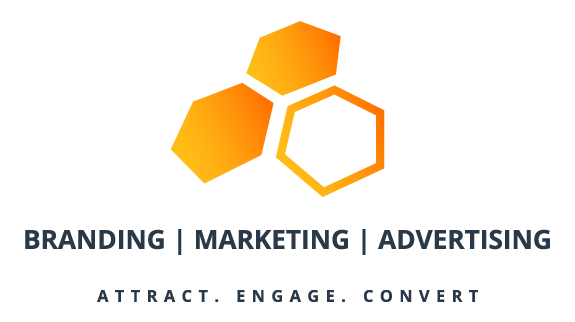Branding | Marketing | Advertising
Top Of Funnel Marketing - Small Business
By: Steven Lockhart
Recent Blog
Want to use an Digital Markating
Lorem ipsum dolor sit amet, consectetur adipiscing elit. Ut elit tellus.

Craft Your Customer Journey: Mastering Funnel Marketing
Funnel marketing, also known as sales or purchase funnel, isn’t just a fancy term. It’s a strategic framework designed to guide potential customers through their decision-making process and ultimately convert them into loyal patrons. There are three key areas we will discuss: Top of Funnel, Middle of Funnel, and Bottom of Funnel. Imagine a large funnel at the top, representing a broad audience interested in what you offer. As they progress through the funnel stages (Awareness, Interest, Decision, and Action), the funnel narrows, focusing on those most likely to convert into paying customers. This strategic approach helps businesses not only attract leads but also nurture them and ultimately turn them into brand advocates.
By implementing these steps, you can create an effective and dynamic marketing funnel that attracts, engages, and converts leads into loyal customers. Remember, a well-designed funnel is a powerful tool for boosting lead generation, customer acquisition, and ultimately, your bottom line. So, ditch the haphazard approach and start guiding your potential customers through a clear and well-defined path within your marketing funnel. You might be surprised by the results!

Small Business - Top of Funnel Marketing Through The Customer Journey
Funnel marketing, also known as the customer journey, is typically divided into three primary stages, each focusing on a distinct objective:
1. Top of Funnel (TOFU): This stage is all about awareness and building brand recognition. Your target audience might not be actively searching for a solution yet, but they are becoming aware of their needs or challenges.
- Key Objective: Attract potential customers and introduce them to your brand.
- Strategies:
- Content marketing: Blog posts, infographics, social media content (educate and inform).
- Search Engine Optimization (SEO): Improve website ranking for relevant keywords (increase visibility).
- Public relations: Build brand awareness through media coverage and industry events.
2. Middle of Funnel (MOFU): Here, the focus shifts to nurturing leads who have shown some level of interest. They are now actively researching potential solutions.
- Key Objective: Engage with leads and demonstrate the value proposition of your product or service.
- Strategies:
- Ebooks, white papers, case studies: Provide deeper insights and address specific pain points.
- Webinars, free trials: Offer opportunities to experience your product or service firsthand.
- Email marketing: Nurture leads with targeted content and personalized offers.
3. Bottom of Funnel (BOFU): This stage targets highly qualified leads who are ready to make a purchase decision.
- Key Objective: Convert leads into paying customers.
- Strategies:
- Product demos, free consultations: Showcase the benefits and address any remaining concerns.
- Compelling calls to action (CTAs): Encourage immediate action (e.g., “Buy Now,” “Sign Up Today”).
- Limited-time offers: Create a sense of urgency and incentivize conversion.
Additional Considerations:
- The funnel is not linear. Customers may move back and forth between stages depending on their individual needs and buying journey.
- Data analysis is crucial. Tracking conversion rates at each stage allows you to identify areas for improvement and optimize your funnel for maximum impact.
- Content plays a vital role throughout the funnel. Providing valuable and informative content at each stage builds trust, establishes expertise, and ultimately guides leads towards conversion.
Master Local SEO: Attract More Customers To Your Small Business & Dominate Your Local Market
Claim your business listings: Ensure that your business is accurately listed on all major search engines, directories, and review sites. This includes Google My Business, Yelp, Bing Places, and other platforms that cater to your specific industry. By claiming and verifying your listings, you can ensure that your business information is consistent across all platforms and that you appear prominently in search results when users search for relevant keywords.
Optimize your website for local search: In addition to your business listings, your website should also be optimized for local search. This includes incorporating relevant keywords and location-based information throughout your site, such as your city or state in page titles, meta descriptions, and content. You should also create unique pages for each location if your business operates in multiple areas. The three questions you should always answer are: What you do, How you do it, and Why you do it – all pertaining to the local location.
Leverage local content marketing: Creating and promoting high-quality local content is an effective way to increase your visibility and engage with potential customers in your area. This can include blog posts, infographics, videos, and other types of content that provide value to your target audience. You can also collaborate with other local businesses and influencers to co-create content and cross-promote each other’s brands. -You will want to link your website’s blogs to Google My Business (as well as LinkedIn, Facebook, etc.)… Always post on your website first so the content is considered originally sourced there.
Encourage customer reviews: Positive customer reviews can help boost your search rankings and increase your credibility with potential customers. Encourage your happy customers to leave reviews on your business listings (keyword-rich reviews with pictures!) and review sites, and respond promptly and professionally to any negative feedback. We usually put a scoring system in place so if we find a customer has expressed a positive experience they receive a link to leave a review. If their experience was negative, you contact them – and do not send a link to leave a review.
Use social media to promote local events and promotions: Social media platforms like Facebook, LinkedIn, Instagram, and Twitter can be powerful tools for promoting local events and promotions. Use these platforms to share news about upcoming events, special offers, and other promotions that can help drive foot traffic and increase brand awareness. Social media is a FANTASTIC way to generate links!
Utilize local SEO tools: There are a variety of local SEO tools available that can help you track your search rankings, monitor your online reviews, and analyze your website’s performance. We typically use Google (Analytics, Search Console, Adwords, etc.), as well as, SEMrush, Moz, Ubersuggest, and Ahrefs (these are a few). These tools can provide valuable insights into how well your local search marketing efforts are working and help you identify areas for improvement.

Building a Winning Sales Funnel: Attract, Nurture, and Convert Your Audience
A well-crafted sales funnel is crucial for businesses to attract, nurture, and convert potential customers. This strategic framework guides your audience through a targeted journey, ultimately leading them to become loyal customers.
Here’s a deeper dive into the three key pillars of building a successful sales funnel:
1. Define Your Target Audience: Building Buyer Personas
The foundation of any effective sales funnel lies in understanding who you’re trying to reach.
- Market Research: Conduct thorough market research to gather insights into your target audience’s demographics, interests, online behavior, and pain points.
- Buyer Personas: Leverage this research to create detailed buyer personas – fictional representations of your ideal customers. These personas should encompass their:
- Demographics: Age, income, location, etc.
- Needs & Challenges: What problems are they facing that your product or service can solve?
- Online Behavior: Where do they spend their time online? What social media platforms do they use?
- Values & Motivations: What are their buying triggers? What are they looking for in a solution?
Crafting a Tailored Message: With a clear understanding of your target audience, you can tailor your entire funnel to resonate with their specific needs and interests.
2. Compelling Content: Nurturing Leads Throughout the Journey
Content is the fuel that propels your sales funnel. At each stage, the goal is to provide valuable and informative content that addresses your audience’s needs and progresses them further down the funnel.
- Top of Funnel (TOFU): This stage focuses on attracting potential customers who may not be actively searching for a solution.
- Content Examples: Blog posts, informative articles, industry reports, engaging social media content (e.g., infographics, videos).
- Focus: Educate and build brand awareness.
- Middle of Funnel (MOFU): Here, the focus shifts to nurturing leads who have shown some level of interest.
- Content Examples: Ebooks, white papers, case studies, webinars, free trials.
- Focus: Provide deeper insights and demonstrate how your product or service addresses their specific pain points.
- Bottom of Funnel (BOFU): This stage targets highly qualified leads ready to make a purchase decision.
- Content Examples: Product demos, free consultations, persuasive calls to action (CTAs), limited-time offers.
- Focus: Offer compelling reasons to choose your product or service and encourage conversion.
Nurturing with CTAs: Throughout the funnel, strategically placed calls to action (CTAs) guide leads further. Motivate them to download an ebook, subscribe to your newsletter, or schedule a free consultation.
3. Continuous Improvement: Tracking & Optimizing Your Funnel
Data is your friend when it comes to optimizing your sales funnel. Utilize funnel analytics to track key metrics like:
- Conversion rates: Measure the percentage of visitors who take a desired action at each stage.
- Traffic sources: Identify where your leads are coming from (e.g., organic search, social media).
- Engagement: Track how long visitors spend on your website and which content resonates best.
A/B Testing: Test different elements of your funnel, such as landing pages, CTAs, or even content formats. This allows you to identify the variations that perform best and continuously refine your funnel for optimal results.
Remember: Building a successful sales funnel is an ongoing process. By consistently defining your target audience, crafting compelling content, and leveraging data-driven insights, you can attract, nurture, and convert leads into loyal customers.
Unlocking the Power of Funnel Marketing: Overview
Know Your Audience: It all starts with understanding your ideal customer. Who are you trying to reach? What are their needs and pain points? By creating buyer personas, you gain invaluable insights into your target audience. Imagine them as your fictional characters, complete with demographics, behaviors, and goals. This allows you to tailor your funnel to resonate with their specific interests and challenges. Resources like HubSpot’s Make My Persona: https://www.hubspot.com/make-my-persona can help you get started on creating your own buyer personas.
Content is King (and Queen): At each stage of the funnel, provide valuable and relevant content that resonates with your audience. This could be informative blog posts, engaging videos, eye-catching infographics, or even social media content tailored to specific platforms. Nurture leads with informative pieces in the early stages, addressing their pain points and offering solutions related to your brand. As they move down the funnel, offer persuasive calls to action (CTAs) that encourage them to take the next step, whether it’s downloading a white paper, attending a webinar, or making a purchase. Remember, high-quality content that educates and engages is key to building trust and establishing yourself as an industry thought leader.
Track, Analyze, and Optimize: Data is your friend in the world of funnel marketing. Utilizing funnel analytics is essential to understand how well your funnel is performing. Analyze conversion rates at each stage to identify areas for improvement. A/B testing different landing page designs, CTAs, or content formats can help you identify what resonates best with your audience. Remember, optimization is an ongoing process. By continuously testing and refining your funnel based on data, you can ensure it is always working efficiently to convert leads into customers. Crazy Egg: https://www.crazyegg.com/ and Optimizely: https://www.optimizely.com/ are two popular A/B testing tools that can help you with this process.
Driven by Integrity & Proven Results:
My success stems from a commitment to ethical practices and a focus on building strong relationships – in business, family, and the community. I leverage simple, repeatable strategies and assemble teams that thrive on calculated risks and exceeding expectations. Together, we achieve incredible things.
Key Achievements:
- Led high-performing marketing & sales teams, managing budgets exceeding $4 Million/month.
- Implemented comprehensive digital marketing strategies encompassing content, SEO, social media, website optimization, Google My Business listings, and reputation management.
- Delivered exceptional financial results:
- Saved a Pharma CRM application company $27 Million annually.
- Quadrupled sales for a PR company from $2.4 Million to $10 Million within 6 months.
- Grew an e-commerce business from $0 to $2 Million+ annually.
Trusted Advisor:
- Advised 12 companies through successful mergers and acquisitions, ultimately becoming public entities.
- Key advisor to publicly traded companies.
My Mission:
Serving others. Situations may change, but my core mission remains unwavering. I am here to leverage my expertise and passion to empower businesses and individuals.

Steven Lockhart is a nationally recognized leader in digital marketing and one of the foremost experts in local search marketing.




